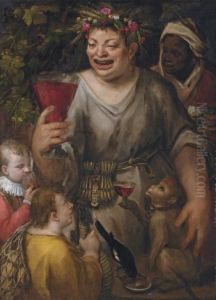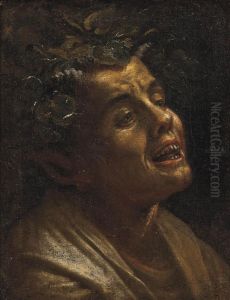Sebastiano Ii Filippi Paintings
Sebastiano II Filippi, better known as Bastianino, was an eminent Italian painter of the Renaissance period, born in 1530 in Ferrara, Italy. He was a significant figure in the late Renaissance movement, contributing to the transition towards Mannerism with his distinctive style and approach to painting. Bastianino was the son of Camillo Filippi, another well-regarded painter of the time, from whom he initially learned the basics of art and painting. This familial connection provided him with a solid foundation in the artistic traditions of the era, but Bastianino would go on to develop a unique style that distinguished him from his contemporaries and even his own father.
Bastianino's work is characterized by its dramatic use of perspective and the dynamic poses of its figures, elements that reflect the emerging Mannerist tendencies of the time. He was particularly influenced by the works of Michelangelo, which is evident in his robust, muscular figures and the emotional intensity of his compositions. One of his most famous works, the fresco of the Last Judgment in the Cathedral of Ferrara, showcases this influence, drawing comparisons to Michelangelo's own Last Judgment in the Sistine Chapel. This monumental work not only demonstrates his technical skill but also his ability to infuse his works with deep spiritual and emotional resonance.
Throughout his career, Bastianino received numerous commissions from churches and noble families in Ferrara and its surroundings, contributing significantly to the artistic heritage of the region. His religious paintings, in particular, are noted for their vivid imagery and the skillful incorporation of classical themes and motifs, which he reinterpreted through the lens of the Counter-Reformation's religious fervor.
Despite his success, Bastianino's life was not without challenges. The artistic scene of the late 16th century was highly competitive, and his work was sometimes overshadowed by other contemporaries. Nevertheless, his contributions to the Italian Renaissance and the transition to Mannerism have been increasingly recognized by art historians in the centuries following his death in 1602.
Today, Bastianino is remembered as a master of the Ferrarese school, whose works continue to be studied for their innovative approach to composition, figure, and the emotional depth they convey. His legacy lives on, not only in his surviving works but in the influence he had on subsequent generations of artists in Italy and beyond.

